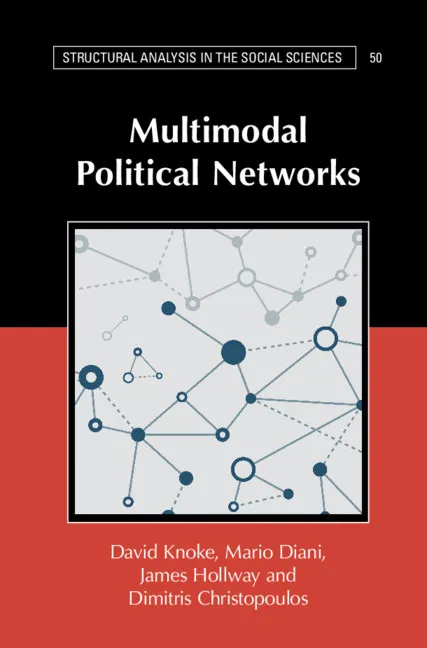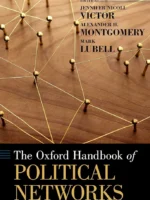Multimodal Political Networks Review
Multimodal Political Networks by David Knoke advances network analysis beyond single-layer graphs to capture how people, organizations, issues, resources, and events interlink in politics. It treats power as structure across modes, not just ties among individuals.
Overview
Knoke formalizes multimodal and multiplex models: two-mode (affiliation) and k-mode networks; layers for money, information, endorsement, and regulation; projection pitfalls; and methods for community detection, influence, and brokerage across modes. Case studies span lobbying systems, policy coalitions, and interorganizational fields.
Summary
The book shows how to model actors-by-organizations, actors-by-issues, and orgs-by-resources simultaneously, then analyzes paths that cross modes (e.g., donor → PAC → legislator → committee). Tools include bipartite/trimodal projections with weighting schemes, stochastic blockmodels for multi-relational data, ERGM/TERGM variants, and centrality/constraint metrics adapted for heterogeneous nodes. Emphasis: inference with design awareness—sampling frames, missing data, and causality limits in observational political networks.
Authors
David Knoke writes as a networks scholar with long experience in organizational and political sociology. The tone is method-forward with applied illustrations.
Key Themes
Power as multi-layer connectivity; affiliations as conduits for resources and frames; projection choices reshape conclusions; combining structure with temporal change improves explanation.
Strengths and Weaknesses
Strengths: clear multimodal formalism, careful warnings about projection bias, solid policy-lobbying applications. Weaknesses: steep methods ramp for newcomers and lighter treatment of cutting-edge dynamic, high-frequency data. Pair with hands-on software tutorials.
Target Audience
Political scientists, policy analysts, sociologists, and data scientists mapping lobbying, advocacy, and interorganizational fields.
Favorite Ideas
Mode-crossing paths as mechanisms; weighted projections that preserve incidence strength; blockmodels to reveal role structures across actors, orgs, and issues.
Takeaways
Model politics as a system of overlapping modes. Define nodes and relations explicitly, choose projection and inference methods that match mechanisms, and report uncertainty. Multimodal design turns messy policy worlds into analyzable structure.




